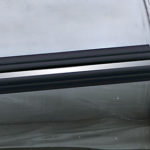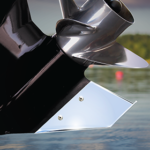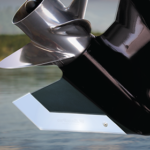Crankbait Tips from Pro Angler Greg Mangus
June 19, 2018 | Andy Buss
There is not a more classic bass catching lure than the crankbait. Bass fall victim to it from coast to coast and border to border. But, as it comes in countless color schemes, shapes, sizes, and depths, it can be confusing to determine which to throw. Oh, and the material it is created with also has a tremendous impact on its performance. Luckily, unlike crankbait, Megaware products are easy to install and confusion free. But today, we’re eliminating confusion with crankbait tips from pro angler, Greg Mangus.
Greg Mangus of Fremont, Indiana is one of those anglers who brings fear into competitors at tournaments and is called upon to speak. He is approaching legendary status in the MidWest. And, he is a crankbait guru. Over the past 40 years, he has traveled much of the country attacking spotted, largemouth, and smallmouth bass. His experiences helped him create his own crankbait company – C Flash Crankbaits. His insight to crankbaits will help anglers of all levels determine which are best for their conditions.


Crankbait Tips for Shallow Bass
“Depending on where you live,” Mangus begins, “the bass are keyed in on either the shad or bluegill spawn during the early summer. With both species, the bass are normally shallow.” He suggests tossing the combination of shallow running, square bill, and lipless crankbaits in likely spawning areas. He adds, though, “Always check offshore isolated structure. You may not catch as many on these spots, but you will often catch the biggest.” Crankbaits are an excellent bait for these places, as the bass are often there waiting to ambush unsuspecting prey. Comb the top with the aforementioned baits first, then dissect the edges with deeper running crankbaits. In addition, an area with unusually high amounts of rain could keep the bass shallow. “Rain will keep the bass shallow with rising water levels,” admits Mangus. “This is when a square bill crankbait will excel.” Don’t be afraid of the weeds either: the squared lip on these baits “cleans” itself from the weeds.
Crankbait Tips – Materials
Crankbaits are normally made from either plastic or balsa, but, in recent years, foam has been increasing in popularity. Here is a look at the advantages of all three.Crankbait Tips – Plastic
Hard plastic is the most common and widely used crankbait. They are easily mass produced with consistency in their effectiveness. “Plastic is louder,” explains Mangus. “Most come with rattles inside, which makes it easier for the bass to hone in on.” He adds that plastic crankbaits get deeper and cast farther. Pro tip: Plastic crankbaits are the best choice for deep water situations.Crankbait Tips – Balsa
The longtime criticism of balsa crankbaits is the inconsistency. “Because wood is nature made and has inconsistencies throughout, two baits of the same make and model may have drastically different actions,” Mangus said. “They also wear out easier than plastic.” However, the advantages can pay off in spades, “Balsa baits have a distinct thump compared to plastic, and is quieter. And because it is normally much more expensive type of lure, fish do not see them as often. As a result, fish are more vulnerable to them.” Pro tip: Spend a little more and invest in a few balsa crankbaits, especially if you’re going to a highly fished area.






Comments